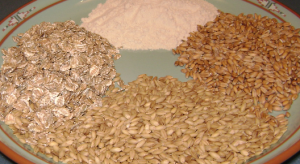Getting up off the floor predicts mortality
Several stories may be worth your reading. First there’s an interesting test that seems to fairly strongly predict mortality risk. It involves getting up from the floor using a minimal amount of assistance and support. A Simple Test Assessing Ability to Sit Up From the Floor Predicts Mortality come from Medical News Today. It discusses research from Brazil published in the European Journal of Cardiovascular Prevention. Here’s the pertinent information:
“They told the participants to try and sit up with the least amount of support that they believe necessary, and not worry about their speed. They scored the participants’ ability to both sit and rise out of 5. For each time the participants used support from their hand, knee or other part of their body the researchers would subtract a point. A total composite score out of 10 was assigned to them which would determine which category or group they belonged to (C1, 0-3; C2, 3.5-5.5; C3, 6-7.5; and C4, 8-10).
A total of 159 people died (a 7.9% mortality rate) at the end of the study, with significantly more deaths occurring among people with low test scores. They found that the rates of mortality between the four groups differed by quite a great deal, even when controlled for gender, age and body mass index (BMI). Those belonging to group C1, which had the lowest score range, were 5-6 times at higher risk of death than those in group C4. This difference suggests that the sitting score is good predictor of all-cause mortality.
Participants with scores below 8 had mortality rates 2 to 5 times higher than those with scores ranging from 8-10. The authors noted: “‘a 1-point increment in the [sitting-rising] score was related to a 21% reduction in mortality.'”
Watch the video below to see an explanation of the sit-to-stand process. Try it out. What’s your score?
Kids who walk or bike to school concentrate better
An article in the Atlantic tells us a) kids who move around more think better and by extension, b) there really is no division between the mind and the body. The Link Between Kids Who Walk or Bike to School and Concentration discusses Dutch research that indicates the following:
“The survey looked at nearly 20,000 Danish kids between the ages of 5 and 19. It found that kids who cycled or walked to school, rather than traveling by car or public transportation, performed measurably better on tasks demanding concentration, such as solving puzzles, and that the effects lasted for up to four hours after they got to school.”
Niels Egelund is the researcher who conducted the research. I love what he says about moving and sitting (emphasis is mine).
“I believe that deep down we were naturally and originally not designed to sit still,” Egelund said. “We learn through our head and by moving. Something happens within the body when we move, and this allows us to be better equipped afterwards to work on the cognitive side.”
I’m going to go way out on a crazy limb and say that if movement is good for cognition in kids, it’s probably just as good for adult cognition. And we see here that the concept of a division of the mind and the body simply doesn’t exist. The health of one depends on the health of the other. The evidence shows that the French philosopher Descartes got it wrong with his idea of dualism.
More on gluten
Going gluten-free is probably the biggest, most discussed issue in nutrition these days. By eliminating gluten, are we improving our health or are we just following the latest fad? The jury is out. Certainly if someone has celiac disease then it’s vital that gluten be eliminated for good health. But it’s unclear if everyone else will benefit from avoiding gluten.
There is a lot of anecdotal evidence out there to support the health benefits of cutting gluten, but anecdotal evidence isn’t terribly powerful evidence. Gluten-free whether you need it or not comes from the New York Times Well Blog. The article discusses all of these details. It doesn’t come down firmly on any side but it provides evidence that perhaps the anecdotal evidence supporting gluten avoidance is worth further investigation:
“Crucial in the evolving understanding of gluten were the findings, published in 2011, in The American Journal of Gastroenterology, of an experiment in Australia. In the double-blind study, people who suffered from irritable bowel syndrome, did not have celiac and were on a gluten-free diet were given bread and muffins to eat for up to six weeks. Some of them were given gluten-free baked goods; the others got muffins and bread with gluten. Thirty-four patients completed the study. Those who ate gluten reported they felt significantly worse.
That influenced many experts to acknowledge that the disease was not just in the heads of patients. ‘It’s not just a placebo effect,’ said Dr. Marios Hadjivassiliou, a neurologist and celiac expert at the University of Sheffield in England.”
Something else caught my eye in the article. Experts who caution against everyone going gluten-free have suggested the following:
“They also worried that people could end up eating less healthfully. A gluten-free muffin generally contains less fiber than a wheat-based one and still offers the same nutritional dangers — fat and sugar. Gluten-free foods are also less likely to be fortified with vitamins.”
Okay, here’s the big revelation: EAT FEWER MUFFINS! Anyone worried that gluten-free muffins don’t offer the same nutritional benefits of wheat-based muffins is looking at gluten-free grains of sand on the beach and ignoring larger issues. To me, the big picture is still one in which we’ll have better health if we reduce processed food consumption. Eat less stuff that comes out of boxes, bags and cartons. That includes all kinds of stuff that contains gluten: bread, crackers, chips, cereal, etc. Eat more plants.

